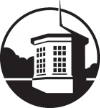Haverford’s buildings and grounds create a distinctive sense of place that is elemental to our collective identity. At times of financial stress, it is easy for an institution to underfund its facilities maintenance to provide general budget relief. Some expenses can be delayed, but deferring maintenance as an ongoing budget tactic will only cost more in the long run. To be a responsible steward of our physical endowment, Haverford must remain on top of its maintenance needs and invest in the preservation of our campus for future generations.
At the same time, changes in technology and interdisciplinary work demand that our physical structures do more than simply house our instructional and student life programs. Physical spaces become protagonists and catalysts to academic programs that pursue new knowledge in new modes. In keeping with our sense of place and limited resources, Haverford will seek to renovate existing facilities to address these opportunities wherever possible and fiscally prudent.
-
Space Planning and Stewardship
Responsible stewardship of our built campus involves not just planning carefully for major capital projects (see 1.D.3.), but optimizing our utilization of existing physical plant. We will continue to develop more effective approaches to our cross-divisional governance of space planning in order to maintain a strategic approach to space allocation and target deferred maintenance funds to their best and highest uses.Haverford addresses facility capital needs through the Renewals and Replacements (R&R) line in the operating budget. The Facilities Management Department has developed a 5-year rolling plan of R&R expenditures that is updated on an annual basis. R&R must be adequately funded in order to steward responsibly the College’s aging and ever-growing capital facilities. Specific facilities needing attention in the coming years include: -
Campus & Arboretum
Haverford’s treasured 200 acres play an integral part in our mission. Natural beauty inspires, restores, and reminds each of us how setting shapes experience and, in turn, how we as individuals contribute to that setting. Conceived by intentional plan at the College’s founding in 1833, our exterior space remains a rare natural ecosystem amidst greater Philadelphia’s continuing urbanization, and it provides a sense of place for students, faculty, staff, alumni as well as countless members of the surrounding community.Our investment in the campus continues to be guided by the 2008 Campus Master Plan, a document that we will consider updating to reflect our latest thinking about our critical needs and timing. In particular, with an increased desire to utilize the campus as a living laboratory (see 1.B.4.) and four major projects being planned for Founders Green (see 1.D.3.), this is a moment to reflect on that space and its evolution.Stewardship of our campus and its natural resources requires constant vigilance and preventive maintenance. Major initiatives planned for the months and years ahead include efforts to increase the tree canopy, replace aging trees, remove invasive species, add new species, convert turf into meadows, and maintain pond, streams, and riparian buffer.In this effort we will continue to partner with the Arboretum Association, a volunteer group that promotes the Arboretum among a range of audiences by planning programs about campus history, stewardship of the grounds, preserving existing trees, and plans to perpetuate this history for future generations.
